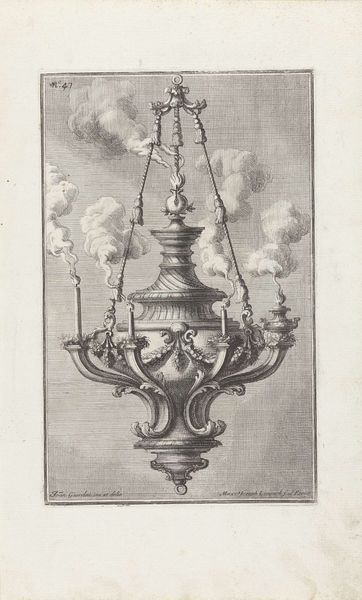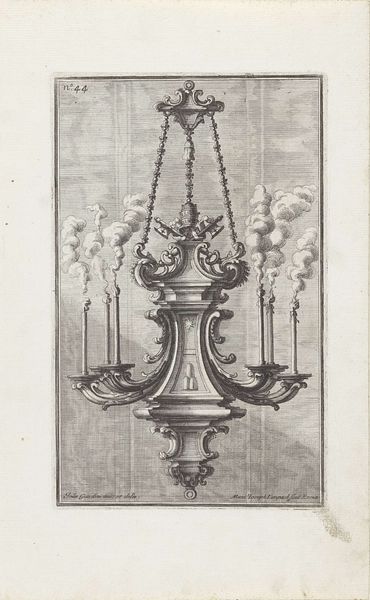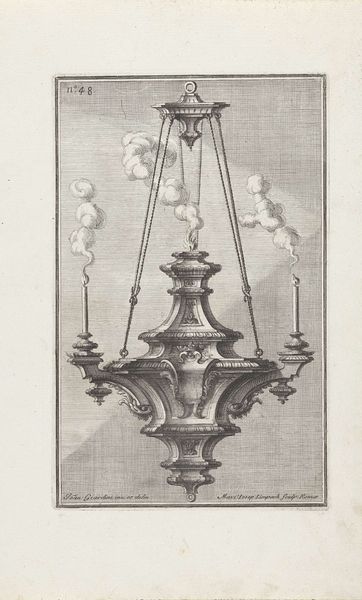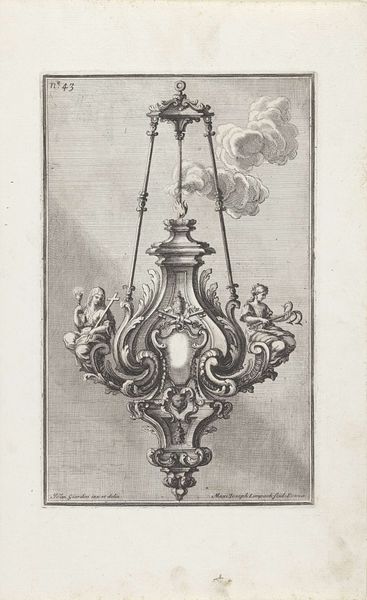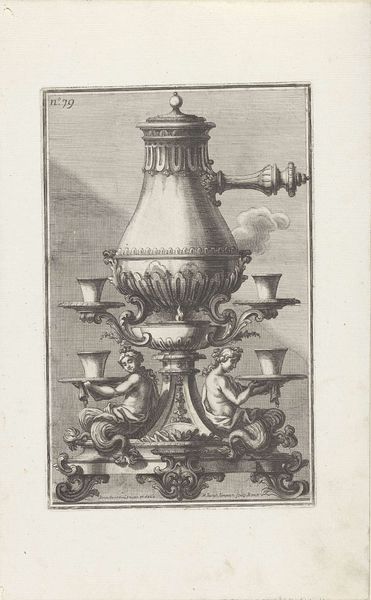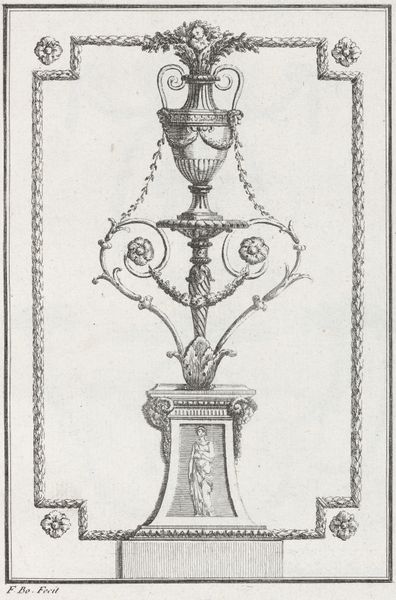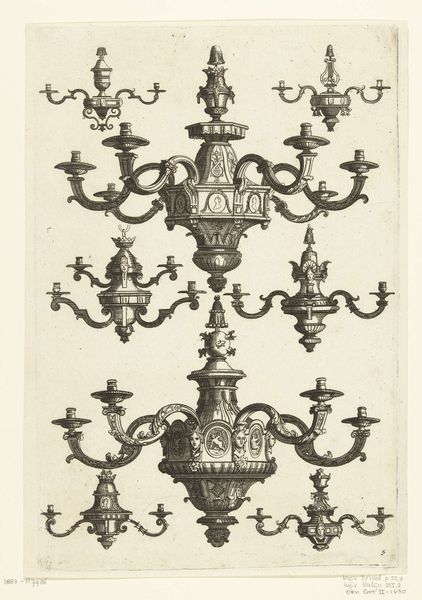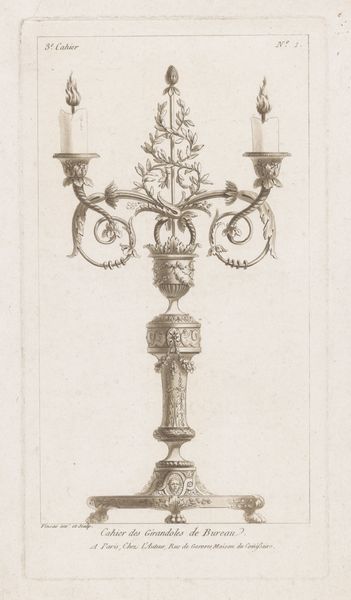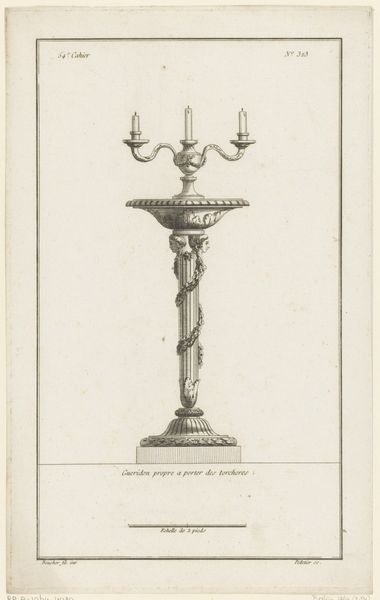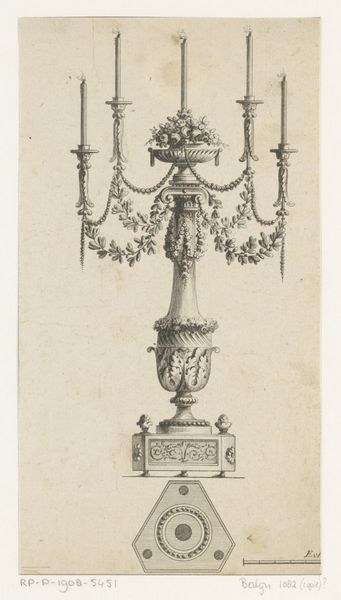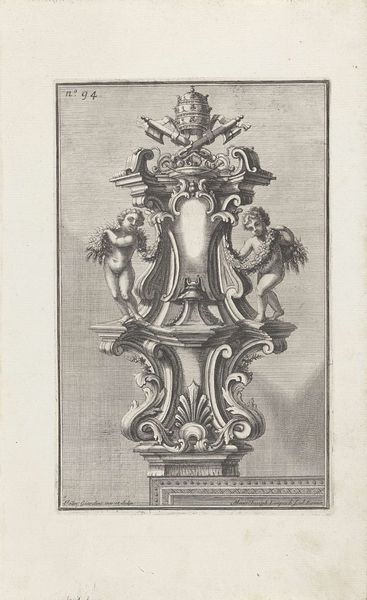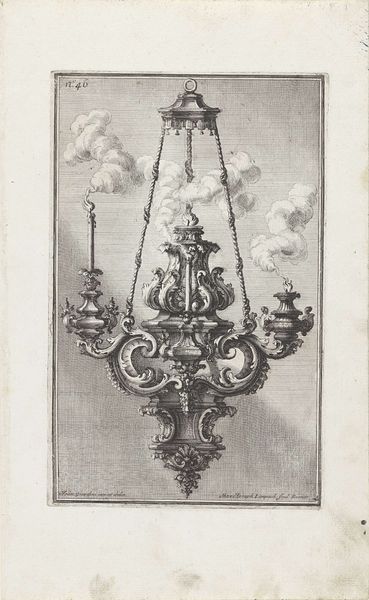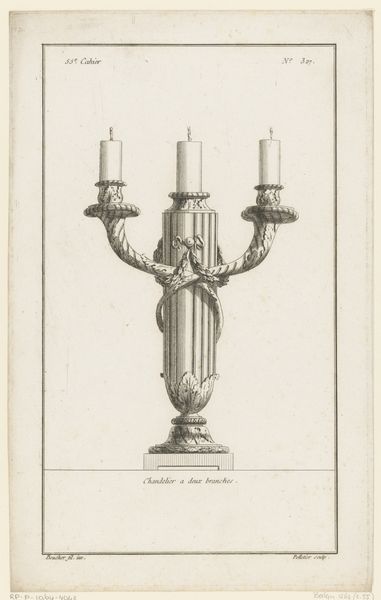
print, engraving
#
baroque
# print
#
old engraving style
#
decorative-art
#
engraving
Dimensions: height 276 mm, width 177 mm
Copyright: Rijks Museum: Open Domain
Editor: Here we have Maximilian Joseph Limpach’s “Kroonluchter met brandende kaarsen,” or “Chandelier with Burning Candles,” from 1714. It's an engraving currently housed in the Rijksmuseum. The detail is astonishing! It's so ornate, and the smoke from the candles gives it such a dynamic feel, even though it’s a still image. What's your take on this piece? Curator: It's interesting to consider how prints like this circulated, showcasing luxury goods to a wider audience. Engravings like this, published at the time, really played a significant role in shaping taste and desire. These images democratized access, in a sense, but also reinforced existing social hierarchies, don’t you think? Someone could look at this and commission it for themselves. Editor: That’s fascinating! I hadn't thought about the marketing aspect of it. So, this print isn't just art for art's sake. Curator: Precisely. Think about the role of light in the Baroque era. It was often used to symbolize divinity and power. This chandelier, dripping with ornate detail, suggests a very specific kind of patron—someone eager to display wealth and refinement but also align themselves with these concepts of power. Consider where this object was intended to exist. Where do you see this? Editor: Probably in some big hall or fancy church. This would reflect light to signal wealth and influence. So this artwork, the engraving itself, acts as a kind of advertisement, spreading those ideas. Curator: Exactly. And who controls that message? The patron commissioning both the chandelier *and* the print. It shows how artistic and commercial interests intertwined during that period. We tend to isolate 'art' but the historical function of art, especially at that time, had very material outcomes. Editor: I never really considered prints like this within that economic and social framework before. This perspective really illuminates the artwork, so to speak. Thanks for making it a bit more clear.
Comments
No comments
Be the first to comment and join the conversation on the ultimate creative platform.
